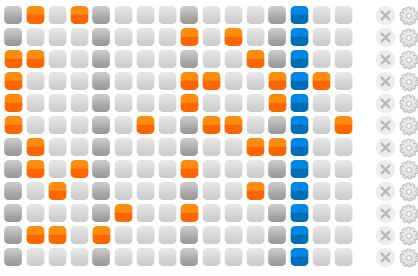

If I get a chance, I may look at your code and see if I can implement something.Įdit: To clarify, what the program does right now is to output through the default Windows MIDI player - called the Microsoft GS Wavetable Synth, I think, which is probably the hardcoded behavior for MCI MIDI output. Sorry I can't be more specific, but I've never coded anything that deals with MIDI beyond simple GlovePIE scripts. Basically, you'd be querying the system to find out what MIDI output devices are present, then allowing the user to select the MIDI device they want to send to. I'll have to read a little more about the MCI, but I think the type of output I'm talking about would have to be accessed through the more advanced MIDI services.

I hope I didn't screw anything up with the actual notes because I'm at work at the moment and unable to actually hear the notes being played. I found some time to change the constants to variables and added support to save/load the board to a text file. If I can find the time I'll clean up the code a bit and make more stuff configurable rather than using constants. Normally the left cell should rotate to a downwards direction (or at least that's what he specified), yet in otomata that doesn't happen.

I've noticed however that my version is slightly different sometimes, such as in. It's been a long while since I've worked with midi files, it was in vb6 and I had to define the entire midi file description myself, so it'll probably take a while to get a correct exported version of it. I've yet to find a midi library in c# that can play individual notes and export them to a midi file though (most only accept entire midi files). It only accepts midi messages (specified by the midi protocol) itself so if I dump everything into a stream with delta ticks and slap a header on it I have basically a midi file. I'm using the standard windows MCI API to output midi messages ( (v=vs.85).aspx). Then it would just be a matter of using a MIDI yoke/loopback to feed it to a sequencer to record it. I can't stand this, and I always disable it.I'd think it would be fairly straightforward to take drake's version and add output to a MIDI channel, assuming you could find the correct libraries for C#.

Many ensembles seem to have Recall snap via MIDI so that a MIDI program change will automatically choose a preset. It's simpler to do than it takes to read. This allows Automato to send MIDI to the new instrument.ġ0) Adjust the transpose or row/column notes so that the right MIDI notes are sent by Automato - or adjust the instrument note handling. On the Connect tab open the MIDI IN properties and click Automato for the MIDI input instrument also use channel 1 for MIDI if another channel is selected (commonly drum instruments use channel 10). This allows the master ensemble snapshots to control the current snapshot setting in the new insrtrument. Reaktor 5.6 will wrap it into an ensemble.ĥ) open that ensemble and copy the instrument insideĦ) go to the top level and paste that instrument there - this removes the ensemble wrapper that R 5.6 just madeħ) delete the ensemble that you just copied from, you don't need it any moreĨ) wire up the new instrument's ins and outsĩ) go to the new instrument properties page and click 'recall snaps by parent' in the Function tab. For the newcomers - steps to modify my auto 2 ensembles posted here:ģ) delete the effect or synth part that you want to replaceĤ) drag a new synth or effect ensemble into the structure view.


 0 kommentar(er)
0 kommentar(er)
